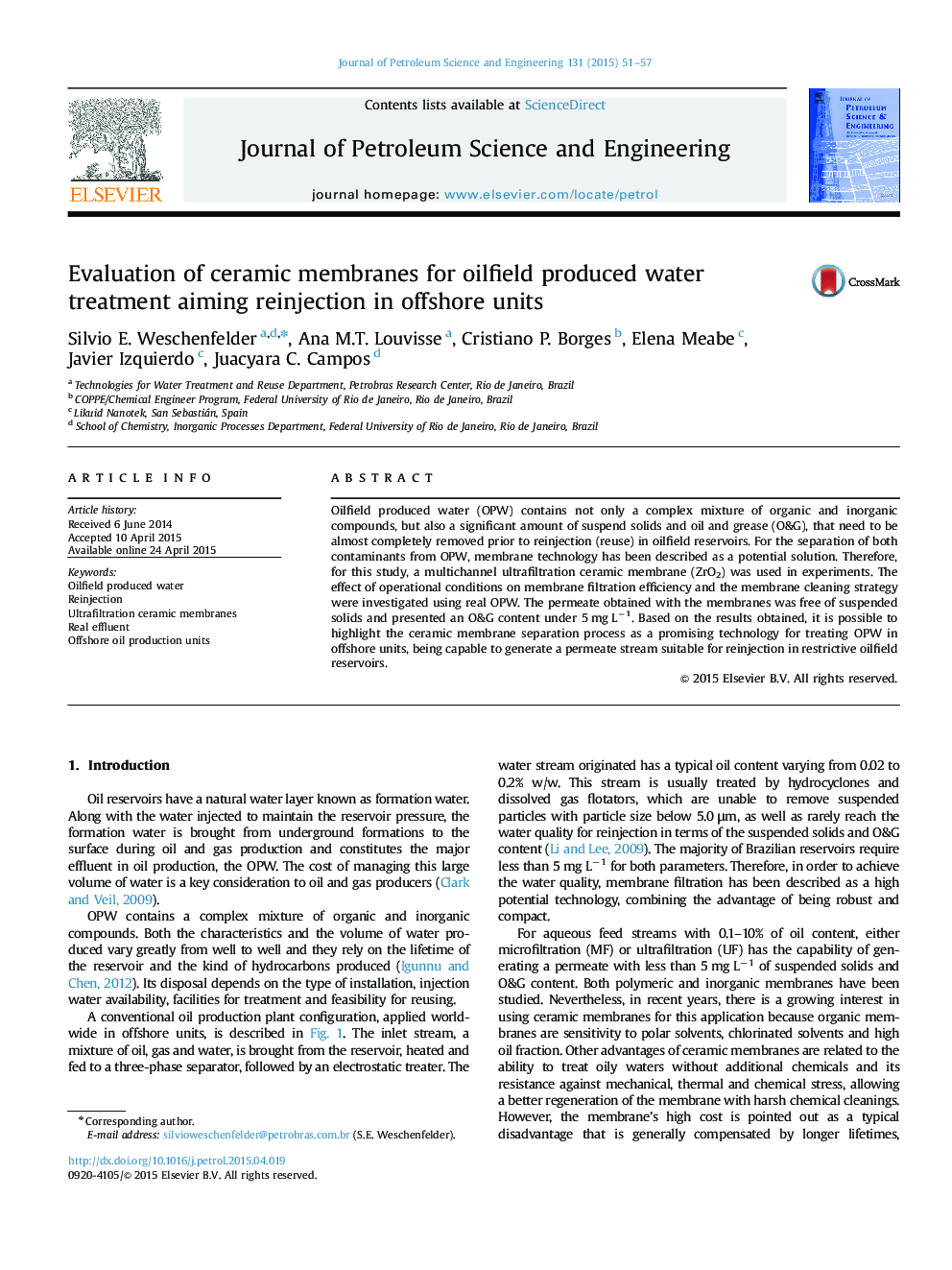| Article ID | Journal | Published Year | Pages | File Type |
|---|---|---|---|---|
| 1754810 | Journal of Petroleum Science and Engineering | 2015 | 7 Pages |
•Ceramic membranes were successfully used for treating a real OPW sample.•The obtained permeate was suitable for reuse in offshore oilfield platforms.•High permeate fluxes were achieved in experiments (>600 L h−1 m−2).•Membrane autopsies helped to identify the main foulant compounds.•The chemical cleaning procedure completely regenerated the membrane permeability.
Oilfield produced water (OPW) contains not only a complex mixture of organic and inorganic compounds, but also a significant amount of suspend solids and oil and grease (O&G), that need to be almost completely removed prior to reinjection (reuse) in oilfield reservoirs. For the separation of both contaminants from OPW, membrane technology has been described as a potential solution. Therefore, for this study, a multichannel ultrafiltration ceramic membrane (ZrO2) was used in experiments. The effect of operational conditions on membrane filtration efficiency and the membrane cleaning strategy were investigated using real OPW. The permeate obtained with the membranes was free of suspended solids and presented an O&G content under 5 mg L−1. Based on the results obtained, it is possible to highlight the ceramic membrane separation process as a promising technology for treating OPW in offshore units, being capable to generate a permeate stream suitable for reinjection in restrictive oilfield reservoirs.
